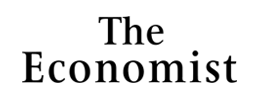Related

Paul Romer
“The World Bank Scandal Is a Bad Sign for the Future of Globalization”


Race, Redevelopment, and the EB-5 Program in Central Brooklyn
Critical Sociology
February 2021
Gentrification’s racial consequences are garnering increased attention as the process advances into majority–minority urban neighborhoods. This study examines the EB-5 Immigrant Investor Program’s implementation in Brooklyn, New York to ground these trends in policies through which gentrification is promoted, histories of racism and uneven development against which they are unfolding, and their disparate impacts on Black communities. While the program purports to use foreign investment to promote job growth in high unemployment areas, its financing of multimillion and billion-dollar development projects facilitates the displacement of longtime residents of the very places the initiative was designed to improve. Central Brooklyn and its outlying areas, home to one of the largest contiguous Black communities in the United States, are host to numerous EB-5 projects that have failed to produce sustainable job growth for existing residents and heightened the growing crisis of unaffordability. My analysis shows how EB-5 projects have enabled investors to use distressed areas disproportionately inhabited by poor and working-class Black communities to qualify for funding, while redistributing benefits upward to wealthy developers and affluent residents and consumers. Ultimately, the EB-5 program and other neoliberal, colorblind urban development policies exacerbate existing racial inequalities in the organization and operation of urban space.
Please fill out the information below to receive our e-newsletter(s).
*Indicates required.